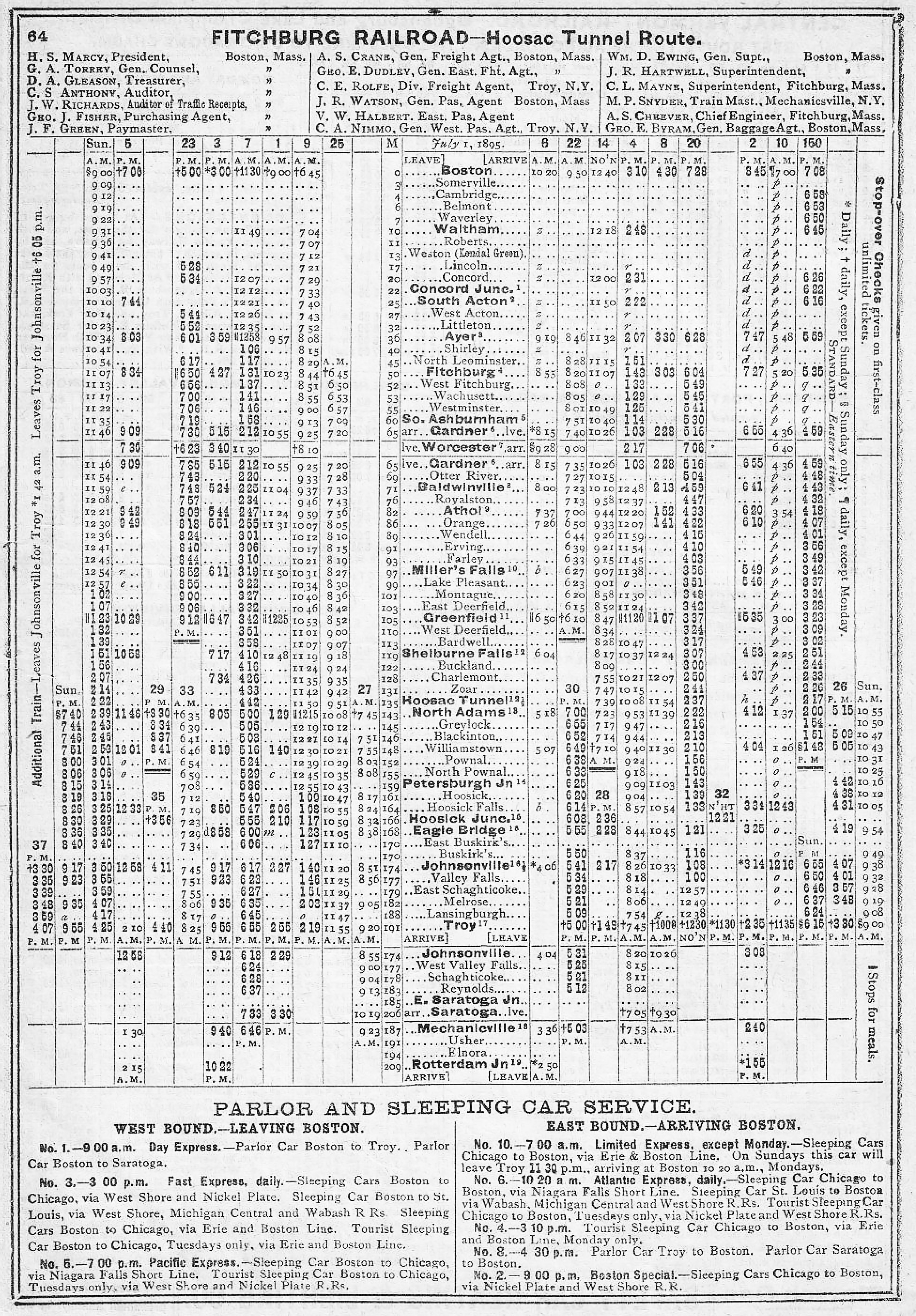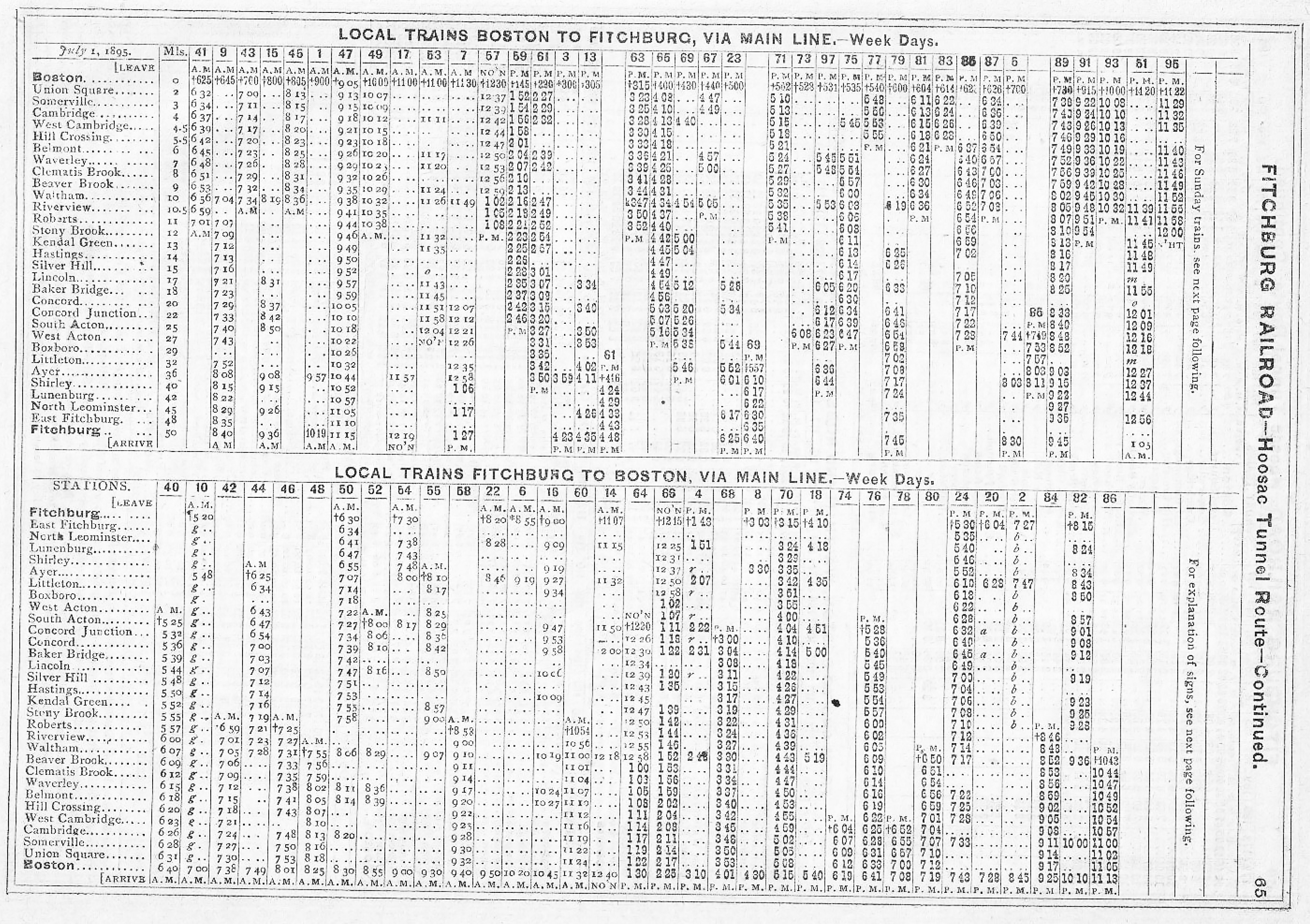Fitchburg Railroad: "The Hoosac Tunnel Route"
Published: February 11, 2025
By: Adam Burns
The Fitchburg Railroad, the most crucial asset to the Boston and Maine (B&M) Railroad, was leased on July 1, 1900, providing pivotal transit routes across Massachusetts to key interchange locations in New York, specifically Albany and Rotterdam Junction.
Established during the era of industrial expansion, it facilitated economic growth and urbanization, contributing significantly to the regional prosperity by linking Boston with the western territories.
Originally incorporated on March 3, 1842, the Fitchburg Railroad commenced operations between Boston and Fitchburg on March 5, 1845. Prior to its acquisition by B&M, it was a considerable railway network, facilitating connections to Bellows Falls, Worcester, and the eastern regions of New York.
Among the railroad’s significant infrastructure accomplishments was the completion of the Hoosac Tunnel, which spans 4.75 miles in western Massachusetts and triumphantly navigates the challenging Green Mountains.
Following B&M’s acquisition, this railway line was designated as the Fitchburg Division. As chronicled by Mike Schafer, the author notes that even after World War II, this route maintained a robust schedule of over a dozen freight trains daily. Today, it continues to serve as a crucial segment of Pan Am Railways.
System Map (Circa 1900)

Inception
The inception of the Fitchburg Railroad in the 1840s was a product of burgeoning industrialism and a growing demand for efficient transportation systems.
Prior to the advent of extensive rail networks, the movement of goods and passengers relied heavily on horse-drawn carriages and canal systems, which were not only slow but also limited by geographical constraints.
In response, a group of visionary entrepreneurs and investors conceived the idea of a rail line that would connect Boston with Fitchburg, a strategic move designed to enhance accessibility and stimulate trade.
The Fitchburg Railroad was officially chartered on March 3, 1842, under the guidance of prominent figures like Alvah Crocker and Nathan Hale.
Notably, Nathan Hale's prior involvement with the Boston and Worcester Railroad provided invaluable experience in pioneering this ambitious project. The primary objective was to construct a 50-mile rail line that traversed Massachusetts’ challenging terrain, linking the economic hub of Boston with the burgeoning industrial town of Fitchburg.
Construction and Early Operations
Constructing the Fitchburg Railroad was a formidable task, encompassing the development of infrastructure capable of overcoming natural obstacles such as rivers, hills, and densely forested areas. This undertaking required innovative engineering solutions, including the design of robust bridges and tunnels.
Among the engineering marvels of this project was the Hoosac Tunnel, a 4.75-mile-long passage through the Hoosac Mountain in western Massachusetts. Although the tunnel's completion came later, it symbolized the kind of challenges that the Fitchburg Railroad faced.
The line's construction began in earnest in 1843, employing thousands of laborers, including many Irish immigrants who played a vital role in laying down the tracks amidst the rugged terrain.
The first train journey from Boston to Fitchburg commenced on March 5, 1845, marking the beginning of regular operations. Early operations focused primarily on passenger service and the transportation of goods, such as textiles and raw materials, between rural areas and urban centers.
Expansion
The Fitchburg Railroad soon emerged as a major artery for economic activity in Massachusetts. Its expansion was driven by the ever-increasing demand for efficient transportation amid rapid industrial growth. By 1847, the railroad extended to Greenfield, Massachusetts, further enhancing the connectivity between Boston and the rest of the state.
One of the railroad's most impactful developments came in 1875 with the completion of the Hoosac Tunnel, after over two decades of challenging construction.
This tunnel opened a direct route to the Hudson River Valley, dramatically reducing travel time and costs, and consequently enhancing trade with western parts of the New England. The completion of the Hoosac Tunnel was celebrated as a technological triumph, often referred to as the "Great Bore" due to its significance and the immense effort required to complete it.
The economic impact of the Fitchburg Railroad was multifaceted. It played a pivotal role in fostering the growth of towns and cities along its route.
Industries, particularly textile mills, ironworks, and manufacturing plants, proliferated along the railway line, benefiting from reduced transportation costs and enhanced access to both labor and markets.
Urbanization was also accelerated as people found it easier to commute to urban centers for employment opportunities, thus contributing to population growth in cities like Boston and Fitchburg.
Timetables (1895)
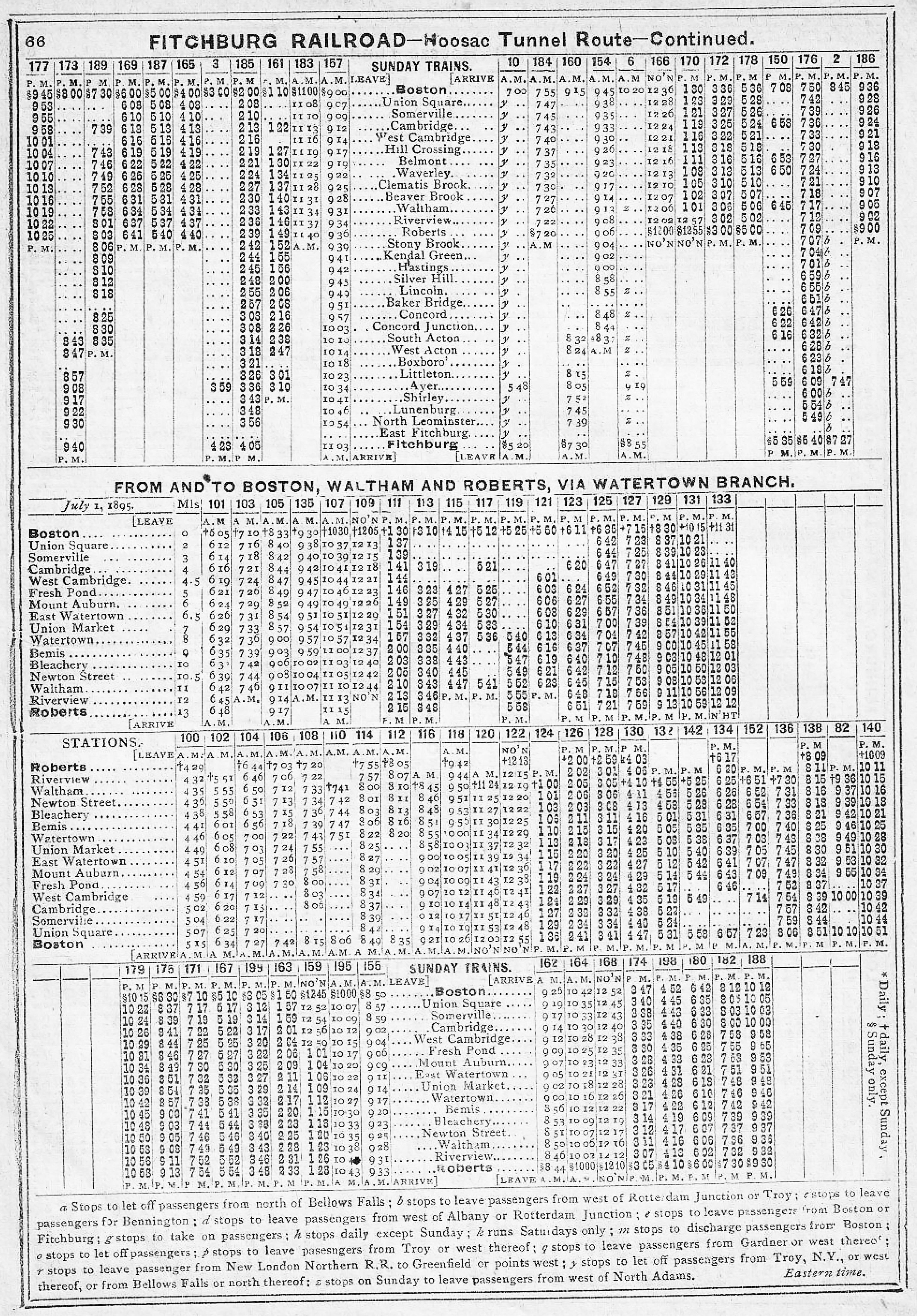
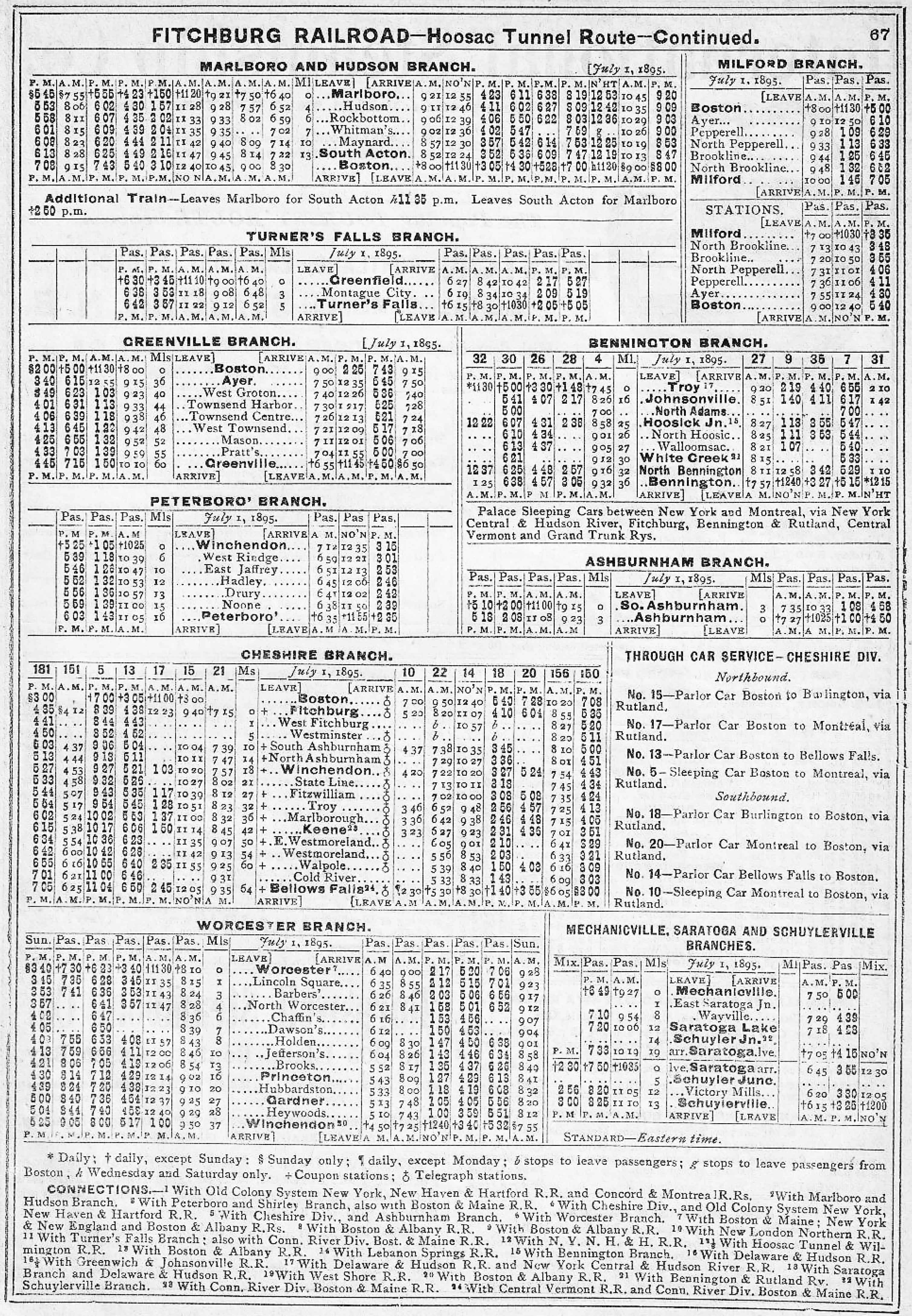
Regional Competition
As the Fitchburg Railroad grew, it faced increasing competition from other railway companies, notably the Boston and Worcester Railroad and the Boston and Maine Railroad. Competition drove innovation, leading to improvements in technology, service quality, and safety standards.
The Fitchburg Railroad's strategic alliances and mergers facilitated its response to competitive pressures. In 1887, the railroad became part of the Boston and Maine Railroad, one of New England's largest and most influential railway networks. This merger marked the beginning of a new era of collaboration and consolidation in the rail industry, enhancing operational efficiency and expanding the reach of the rail network.
Technological Advancements and Challenges
Throughout its history, the Fitchburg Railroad embraced technological advancements to improve its services and maintain a competitive edge. The transition from steam to diesel locomotives in the early 20th century exemplified the industry's commitment to innovation. Diesel engines offered greater efficiency, reliability, and lower operating costs compared to their steam counterparts.
Despite these advancements, the Fitchburg Railroad faced challenges, particularly concerning safety and maintenance. The need for regular track maintenance, repairs, and updates to safety protocols was an ongoing concern. Additionally, severe weather conditions, such as harsh New England winters, posed significant operational challenges, often leading to delays and disruptions.
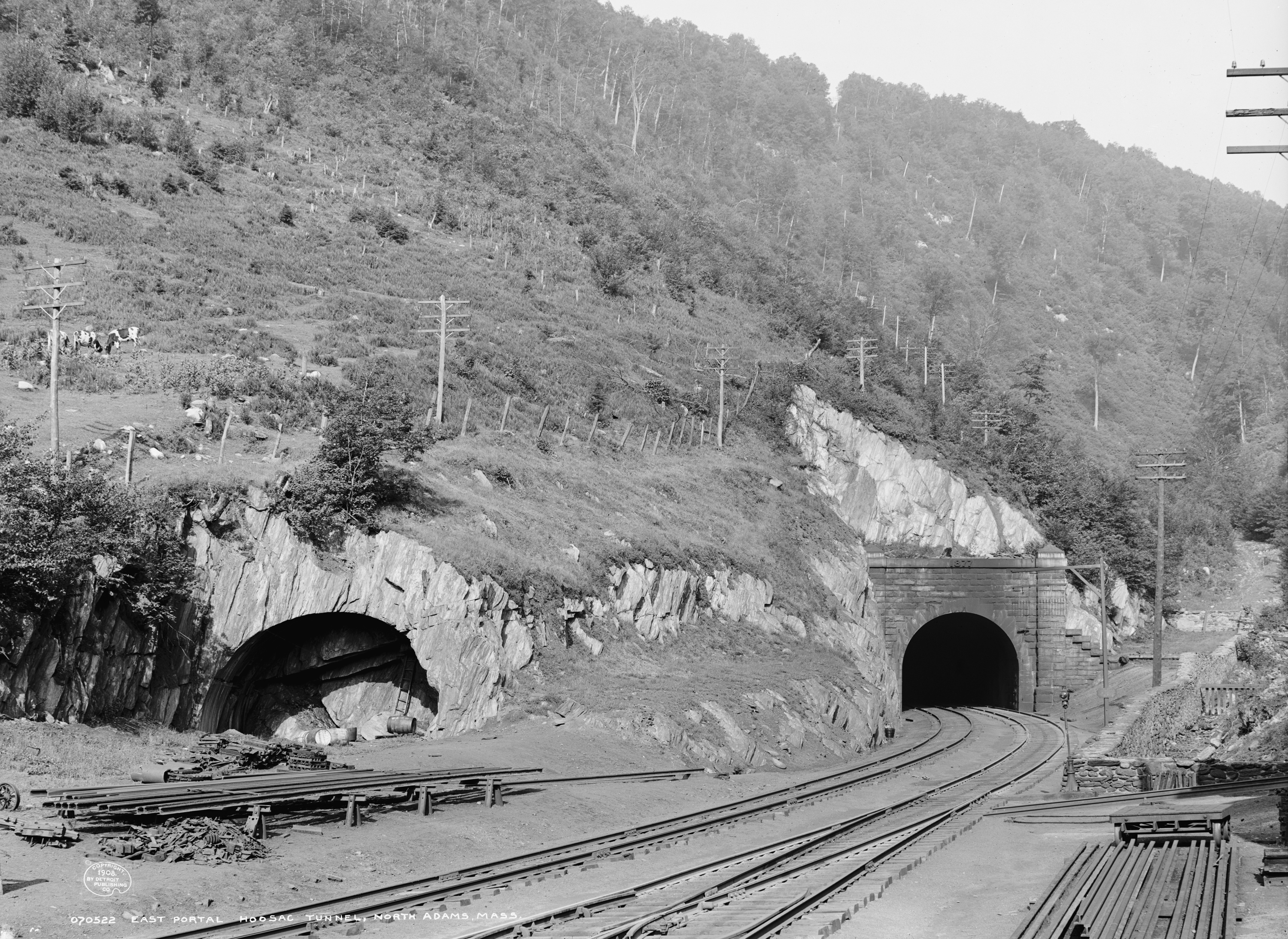 The east portal of Hoosac Tunnel at North Adams, Massachusetts circa 1908. Detroit Publishing Company photo.
The east portal of Hoosac Tunnel at North Adams, Massachusetts circa 1908. Detroit Publishing Company photo.Legacy
The Fitchburg Railroad's journey from its inception in the 19th century to its eventual merger and legacy in the present day represents a microcosm of the broader evolution of rail transportation in the United States. It exemplifies the transformative power of railroads in fostering economic growth, shaping communities, and advancing technological progress.
As Massachusetts and the wider New England region continue to embrace modern transportation solutions, the Fitchburg Railroad's historical contributions serve as a reminder of the enduring influence of visionary infrastructure projects.
The innovative spirit, determination, and resilience that characterized its development remain invaluable lessons for future generations as they navigate the complexities of transportation and economic development in an ever-changing world.
Recent Articles
-
Northern Railroad (NH): A Future B&M Subsidiary
Feb 11, 25 11:32 PM
The Northern Railroad was a small, 19th century system that connected Concord and White River Junction. It was acquired by the Boston & Maine in 1889. -
Fitchburg Railroad: "The Hoosac Tunnel Route"
Feb 11, 25 10:46 PM
The Fitchburg Railroad dated back to 1840 and eventually opend a western extension to eastern New York. It opened the Hoosac Tunnel and became an important B&M subsidiary. -
Boston & Lowell Railroad: A Notable B&M Predecessor
Feb 11, 25 09:48 PM
The Boston & Lowell was one of New England's earliest systems, formed in 1835. A longtime Boston & Maine rival it was later acquired by the B&M in 1887.
